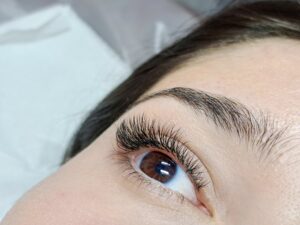Can you get fillers for your cheek bones?
Cheek fillers are a great way to give your face a boost and improve its overall natural contours, fillers can restore volume, enhance definition and soften the look of wrinkles and age lines on the face. They are an effective way to lift and sculpt cheekbones in order to achieve a more youthful and vibrant appearance – the best filler for your cheek bones will depend on your individual needs; there are many types of fillers available, each with its own specific benefits. A consultation with one of our injectable expects can help you determine which type of filler might work best for you specific needs by taking into consideration factors such as your facial anatomy, skin tone, age, lifestyle and desired results. Afterwards you can make an informed decision about whether or not fillers are the right decision to enhance your cheekbones.
How long do fillers in cheeks last?
Fillers in cheeks are one of the most popular types of injectable treatments and can last anywhere from 6 months to two years, depending on the type of filler used. Different types of fillers have different longevity, with some lasting only a short period while other fillers may last up to two years. For instance, hyaluronic acid-based fillers like Juvéderm Voluma can last up to two years while calcium hydroxylapatite-based fillers like Radiesse typically only last around 6-12 months. Additionally, other factors such as genetics, lifestyle habits, and the skill of the injector will also play a role in how long the results from lip filler treatments can be expected to last. Ultimately, getting regular touch up injections is recommended for those wanting to maintain their aesthetic results for longer periods of time.
Do cheeks go back to normal after filler?
Cheek filler is a popular aesthetic treatment that helps restore lost volume in the cheeks and create a more youthful look. As with any filler procedure, results from cheek filler are temporary; over time, your face will slowly lose the shape and volume it gained from the treatment. The good news is that once your cheek filler starts to wear off, your cheeks will go back to their original shape and size – no harm done! 😀
So, if you’re considering having cheek filler but worry about the effects lasting forever – rest assured knowing that your cheeks will return to normal after the filler wears away. That being said… it’s important to understand how long each type of filler will last so you can plan ahead for when you’ll need touch-ups or repeat treatments if desired.
Can cheek filler migrate?
Cheek filler is a type of injectable filler that aims to add volume and shape to the cheeks. The most common type of cheek filler is made from hyaluronic acid, which is a naturally occurring substance in the body. Despite this natural origin, there are some risks associated with cheek fillers, such as the potential for migration, migration occurs when a filler migrates from its injection site to an unintended area of the face. Although rare, it does happen and often causes swelling, bruising or in extreme cases can cause nerve damage or disfigurement if not treated quickly. To reduce the risk of migration, it’s important to choose an experienced practitioner like the ones at James Christian Cosmetics who uses fillers approved by the FDA. For safety reasons, regular check-ups should also be done after getting any kind of injectable treatment.
Do Cheek Fillers Stretch Skin?
Not typically, as the process and material used for injectable cheek fillers does not cause any stretching or thinning of the skin. Cheek fillers are made from hyaluronic acid, which is a natural sugar found in the body. This sugar binds with water to create a gel-like substance that when injected into the cheeks creates a more youthful appearance by plumping up sunken areas and restoring volume. When applied correctly by an experienced professional, cheek fillers are safe and offer immediate results with minimal side effects, making it an excellent solution for those looking to enhance their facial features without surgery.
*Information in this article is not medical advice and may not be factually accurate. It is intended for entertainment purposes only. Consult with a physician before attempting any tips in this blog post and to get the most up to date factual data about any procedure or treatment.














